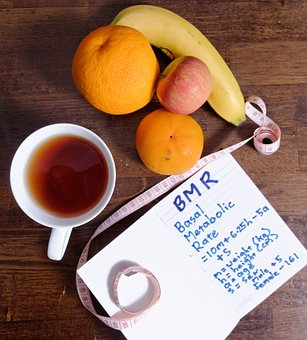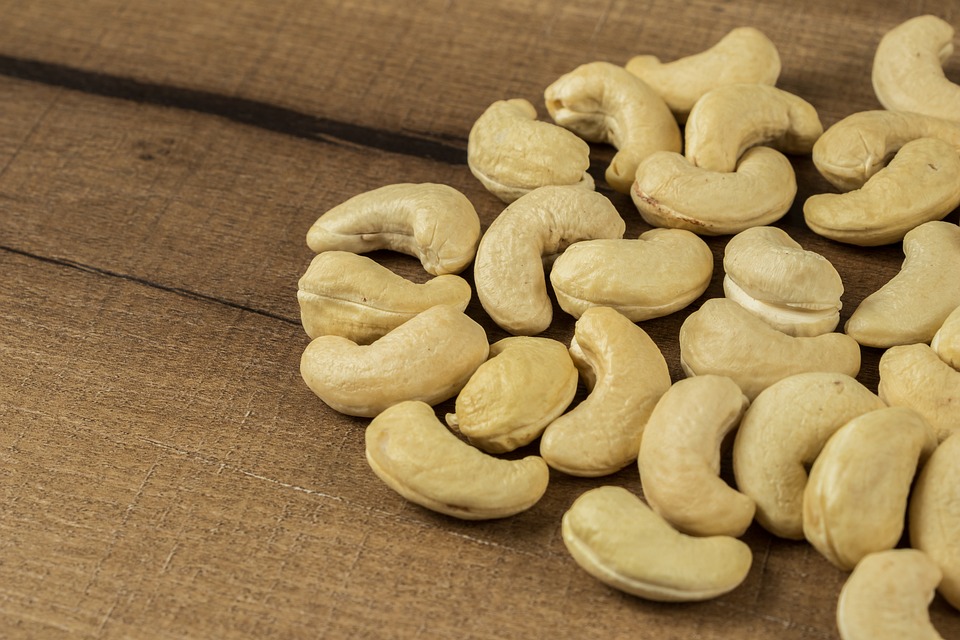
To effectively lose weight, you should integrate exercise into your routine as it greatly boosts caloric expenditure, elevating both your active and resting metabolism. Engage in strength training to increase muscle mass, which enhances your basal metabolic rate. Regular exercise helps prevent weight regain by promoting a balanced energy expenditure. It also manages appetite through hormonal adjustments and reduces stress-induced eating. Furthermore, it bolsters overall health, improving heart health, mental well-being, and sleep quality. By making exercise a consistent part of your lifestyle, you set the stage for sustained weight loss and more on how exercise achieves this is just ahead.
Boosts Caloric Expenditure
How does exercise play a role in burning calories? It’s the ultimate tool for freeing yourself from the shackles of extra weight. By embracing aerobic exercises like brisk walking, swimming, or biking, you tap into powerful activities that considerably increase your caloric burn.
Imagine the thrill of running or challenging yourself through vigorous yardwork. Each stride or stroke adds to the energy you expend, constantly pushing your limits and burning those stubborn calories. Research shows that running is not only effective for burning calories but also enhances cardiovascular health and reduces visceral fat, lowering the risk of diabetes and heart disease.
The magic of aerobic exercises lies in their ability to drive up your caloric burn both during and after your workouts. Whether it’s a steady pace or an intense session, the calories burned vary, influenced by your chosen activity’s type and intensity plus your own weight. Regular exercise not only burns calories during activity but also elevates your resting energy expenditure, contributing to weight loss even at rest.
For instance, a 160-pound individual cycling might see their efforts reflected in a 400-600 calorie burn per hour.
Even when at rest, your body doesn’t halt its dynamic caloric burn. Through regular exercise, you enhance your resting energy expenditure—essentially ensuring your body remains a constant fat-burning machine.
As you continue to move, even subtly, like choosing to stand, you’re fueling your journey toward liberation from excess weight.
Enhances Muscle Mass
While aerobic exercises boost your caloric burn, integrating strength training into your fitness routine can deliver the added benefit of enhancing muscle mass. Embracing this empowering approach leads to muscle hypertrophy, meaning your muscles grow bigger and stronger. As you engage in exercises like weightlifting or bodyweight workouts, your body makes strength adaptations—your muscles adapt to the challenge, breaking down and building back up even stronger. Progressive overload in training promotes muscular adaptations, helping to prevent plateaus in muscle gain or weight loss. Engaging regularly in weight lifting can help improve bone mineral density, which is crucial to preventing osteoporosis and enhancing long-term health. This is your ticket to liberation from excess weight; your metabolic rate rises with increased muscle mass. Why’s this important? Muscle tissue burns more energy, even at rest. Imagine torching more calories while watching your favorite show just because you’ve transformed your muscle composition. A higher resting metabolic rate means sustainable fat loss, without the constant battle of restrictive diets. Resistance training supports body recomposition, enabling you to shed fat while sculpting lean muscle. This transforms you into a leaner, more toned version of yourself. And as you continue to challenge your muscles, you’re also safeguarding them from any loss during dieting phases. Embrace this journey of liberation; it’s about smarter workouts that truly reshape your body and wellbeing.
Prevents Weight Regain

Preservation of weight loss is a crucial aspect of any fitness journey, and regular exercise serves as a powerful ally in preventing weight regain. By integrating exercise into your lifestyle, you pave the way for sustainable habits that extend beyond momentary victories.
Physical activity helps you maintain an energy balance by burning calories, ensuring those hard-earned losses aren’t just temporary. It fights against compensatory mechanisms that slow metabolism after weight loss, keeping your body’s adaptations in check.
By committing to regular exercise, you’re not merely burning calories—you’re shaping a lifestyle where regained weight doesn’t hold power over you. Exercise supports you in making healthier choices consistently and lowers the chances of behaviors that undo your progress, like overeating.
Understanding your daily caloric needs and macronutrient distribution helps optimize the benefits of exercise in sustaining weight loss.
The National Weight Control Registry highlights the key role of physical activity in long-term weight management. This level of lifestyle integration leads to better adherence to dietary changes, ensuring consistency and commitment every step of the way.
With exercise, you’re not just aiming to lose weight; you’re investing in a well-rounded, healthier future. These sustainable habits support your energy balance, manage your appetite, and solidify long-lasting change, maintaining a liberated, weight-free life.
Improves Metabolism
When you exercise regularly, you’re actively boosting your metabolism in several ways. First, building muscle mass increases your resting metabolic rate because muscle tissue requires more energy than fat to maintain. Moreover, workouts boost caloric burn both during and after exercise, keeping your metabolism elevated even at rest. Engaging in strength training effectively burns calories and helps maintain muscle mass, contributing to a higher metabolic rate.
Builds Muscle Mass
Strength training is a powerhouse activity that not only builds muscle mass but also greatly boosts your metabolism. By targeting fast twitch muscle fibers, this transformative exercise enhances muscle power and force, allowing you to break free from stagnation.
You’ll experience a newfound strength progression, not just in your workouts but in everyday life as well. Plus, incorporating strength training circuits provides dual benefits of cardio and strength, making it an efficient choice for your busy lifestyle. Remember, muscle recovery is key—ensure you rest and nourish your muscles properly to maximize gains.
With increased muscle mass, your resting metabolism gets a significant lift. Muscle tissue burns more calories at rest compared to fat, liberating you from the shackles of slow metabolism.
As you embrace strength training, you’ll enjoy the prolonged calorie-burning effect of excess post-exercise oxygen consumption (EPOC), extending the benefits long after your workout ends. This shift leads to better body composition and reduced body fat percentage, setting you on a sustainable path to weight loss.
Boosts Caloric Burn
Exercise serves as a potent tool for boosting your caloric burn and enhancing metabolism. By cranking up exercise intensity, you increase your heart rate, pushing your body to consume more energy. Higher intensity workouts, like running or vigorous swimming, torch more calories than leisurely walks. Your heart rate’s a gauge, showing how hard you’re working; the faster it beats, the more calories you burn.
However, it’s vital to find a balance that suits your fitness level and goals. Different heart rate zones offer varied benefits. In the fat-burning zone (60% to 70% of your maximum heart rate), you utilize about 65% of calories from fat. Push harder into the aerobic zone (70% to 80%) to burn more total calories, though only about 45% come from fat.
Exercise duration impacts caloric burn too—longer sessions mean more calories spent. Yet, remember, your unique physique plays a part; larger individuals naturally burn more due to higher energy requirements.
To truly liberate yourself and achieve weight loss goals, maintain a routine that challenges your limits and integrates varied intensities. Celebrate your progress and let your heart rate guide you to freedom.
Enhances Resting Metabolism
Aside from ramping up your caloric burn, engaging in regular physical activity considerably enhances your resting metabolism. You might be wondering how exercise duration and intensity can lead to such metabolic freedom. When you engage in high-intensity workouts or even short bursts of activity, your body experiences excess post-exercise oxygen consumption (EPOC). This phenomenon extends your caloric burn for up to 48 hours, allowing your resting metabolic rate (RMR) to skyrocket even when you’re relaxing.
If you’re looking for a major metabolic adaptation, incorporating high-intensity interval training (HIIT) or robust strength training into your routine can upgrade your RMR for days.
Lean muscle mass plays a pivotal role here. Each kilogram you gain can spike your basal metabolic rate by up to 100 calories daily. Muscle maintenance becomes your ally, powering a consistent, liberated burn. Regular strength and resistance training preserve and build this invaluable mass, ensuring your metabolism doesn’t falter as you age.
Even subtle changes, like opting to stand rather than sit, can elevate your RMR over time. Embrace exercise as a powerful tool to guard against metabolic slowdown, keeping your weight loss journey smooth and as liberating as ever.
Alleviates Compensatory Eating

You can manage post-exercise appetite by choosing activities like HIIT, which tend to suppress hunger more effectively. HIIT workouts have been shown to elevate your post-exercise metabolic rate, allowing for continued calorie burn even after the workout is complete. It’s essential to understand your own appetite patterns and avoid compensatory eating that can undermine your effort to maintain a caloric deficit.
Managing Post-Exercise Appetite
Feeling post-exercise hunger is a common experience that can vary widely among individuals, with some feeling ravenous while others have no appetite at all.
Your exercise intensity plays a big role here, as vigorous workouts can suppress appetite through hormonal effects, such as reduced ghrelin levels and increased satiety hormones.
However, understanding your body’s hunger cues is essential in guiding this process. A hunger level system can help you gauge if you’re genuinely hungry or just need time to adjust post-exercise.
One way to conquer this is by distinguishing between thirst and hunger. After exercise, it’s common to confuse the two.
Try a hydration strategy: drink water, and wait 15 minutes. This simple tactic helps avoid compensatory eating driven by dehydration, which often mimics hunger symptoms.
Empower yourself with mindful eating and smart food choices.
Choose nutritious, filling options like Greek yogurt with berries or hummus and carrot sticks. These not only satisfy your hunger but align with your weight management goals.
Balancing Caloric Deficit Strategies
Often, achieving effective weight loss involves striking the right balance between a reasonable caloric deficit and your daily activities to prevent compensatory eating behaviors. By aiming for a 300-500 calorie deficit, you can make sustainable progress without feeling deprived.
It’s vital to personalize this deficit to your individual goals and guarantee it doesn’t dip below your Resting Metabolic Rate (RMR).
Implement dietary adjustments with meal planning that emphasizes nutrient-dense foods. By choosing whole grains, fruits, and vegetables, you nourish your body while supporting your weight loss journey. Adequate protein intake is essential for maintaining lean muscle, whereas reducing fat intake aligns with Dietary Guidelines.
Opt for 5-6 small meals through the day to stave off hunger and keep your metabolism active.
Exercise complements your dietary changes by enhancing calorie expenditure. Mix moderate exercises like walking with vigorous activities like running to burn more calories. Integrate resistance training to bolster your metabolism through muscle maintenance.
Exercise for 30 minutes on most days, gradually increasing intensity for greater benefits. With these balanced strategies, you’ll avoid the pitfalls of compensatory eating, liberating yourself from restrictive dieting and achieving lasting weight loss.
Promotes Overall Health
Engaging in regular exercise does more than just assist with weight loss; it considerably boosts overall health. By doing so, you benefit from the powerful cardiovascular advantages exercise offers. Regular physical activity strengthens your heart, improves circulation, and increases the oxygen levels in your body. This translates into a reduced risk of heart diseases and helps maintain healthy blood pressure, cholesterol, and triglyceride levels.
You’ll find that exercise supports the health of your arteries, paving the way to a heart that beats with strength and resilience.
Moreover, exercise enhances your mental and emotional well-being, liberating you from the constraints of stress, anxiety, and depression. As you move, your mood lifts, and your energy levels soar, making life’s challenges seem more manageable.
You’ll sleep better, awakening refreshed and ready to conquer your day. Regular movement empowers you to take control, boosting your self-image and confidence. Strengthened cognition follows, sharpening your mind for clear, agile thinking.
Choosing to exercise is choosing independence. It supports muscle strength and bone density, reducing risks of osteoporosis and falls.
You’ll maintain physical function and embrace a life less burdened by chronic diseases, extending not just your lifespan but your liveliness.
Supports Dietary Efforts

While boosting overall health, exercise also plays an essential role in supporting dietary efforts for weight loss. When you engage in regular aerobic activities like running or swimming, you’re not only burning calories during the workout but also increasing your calorie deficit, important for shedding those extra pounds.
Adding variation with high-intensity interval training (HIIT) can efficiently torch calories in less time, keeping exercise motivation high. And when building strength, you create more muscle mass, turning your body into a continuous calorie-burning machine—even when you’re at rest.
To maintain muscle mass, consider combining cardio with resistance training. This synergy helps preserve your muscle, preventing the metabolism slow-down that often accompanies weight loss. Regular strength training can also counteract age-related muscle loss, ensuring your metabolism stays robust.
These practices lead to workout consistency, a key element in reaching your weight goals.
Moreover, exercise acts as a stress buster, reducing the likelihood of stress-induced eating. Activities like yoga promote mindfulness, helping you choose wisely at meal times.
The appetite suppressing effect of exercises like HIIT makes dietary efforts more manageable, carving a path to true liberation from unhealthy eating habits.














